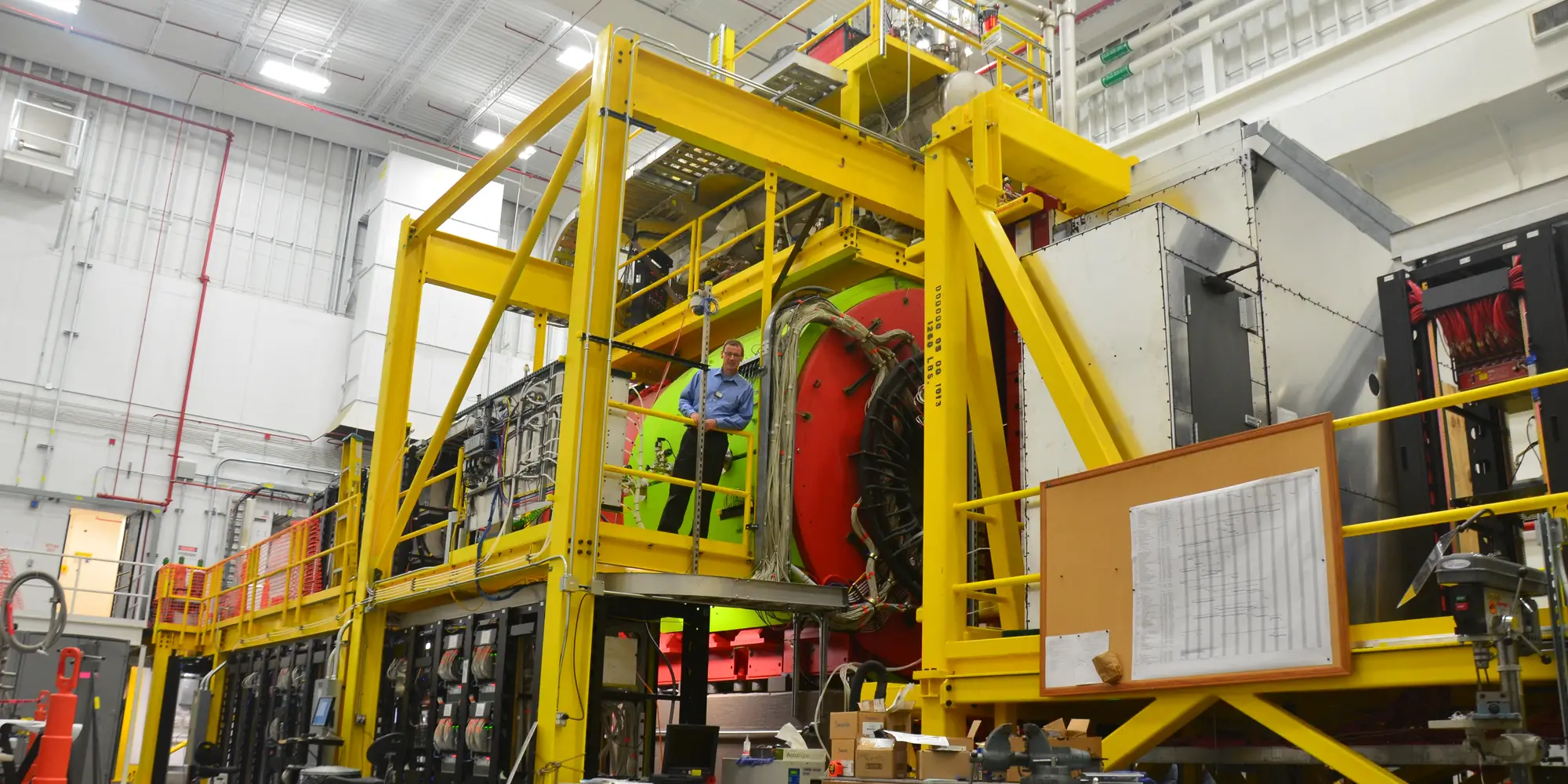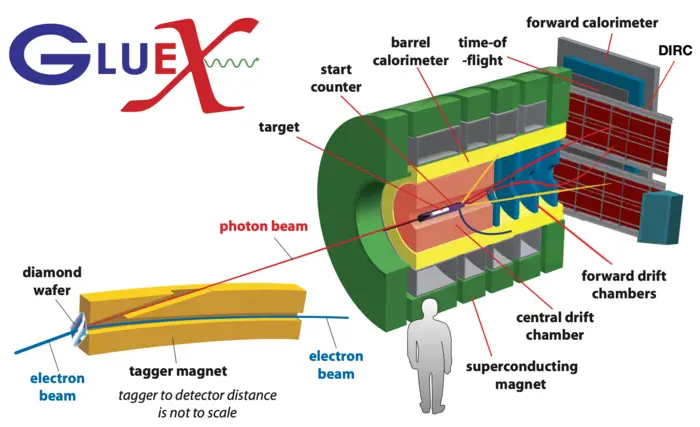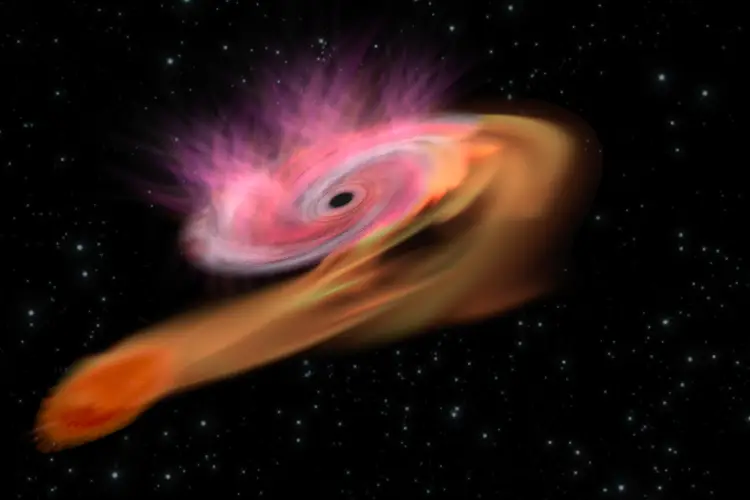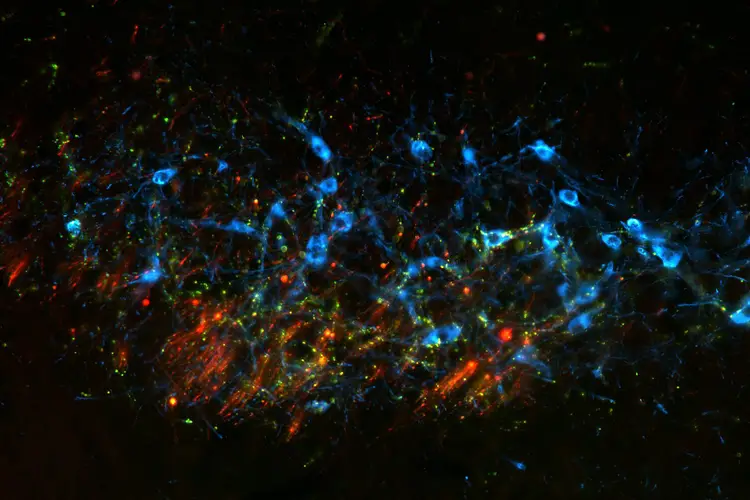
In a First, Physicists Set an Upper Limit in the Search for Hybrid Mesons
Media Inquiries
Carnegie Mellon University’s Professor Curtis Meyer and his research colleagues explore an uncharted world inside protons and neutrons. For the first time, researchers have provided measurements describing a maximum boundary for a subatomic particle known as a hybrid meson in a journal paper(opens in new window) published in Physical Review Letters. The measurements show scientists a path forward in a search for these elusive particles that provide a new look at the force that holds all matter together.
“The stage is set for future discoveries,” said Meyer, senior associate dean for CMU’s Mellon College of Science and the Otto Stern Professor of Physics. “We’re at an exciting phase where we’re able to analyze a great deal of data. This paper is the first to address one of the experiment’s foundational questions.”
Applying a symmetry property of the strong force, the team set the upper limit on the photoproduction cross sections of a hybrid meson known as the spin-exotic π1 (1600).
Exotic-hybrid mesons are subatomic particles that have been theorized, but definitive experimental confirmation is still pending. By producing an exotic-hybrid meson, researchers aim to tease apart information about gluons — the carrier of the strong force, or the "glue," that binds a quark and antiquark together within mesons and all matter.
Meyer’s work is with the Gluonic Excitation (GlueX(opens in new window)) Experiment at Thomas Jefferson National Accelerator Facility in Newport News, Virginia. Using Jefferson Lab’s Continuous Electron Beam Accelerator Facility, he is searching for new forms of matter, specifically the particles that hold quarks together in hybrid mesons.
Exotic-hybrid mesons are of particular interest to the research group because the gluons could potentially exist in an excited state. Understanding this state could reveal information about how subatomic particles are built and why quarks are never found alone in the universe.
Co-author Will Imoehl, a postdoctoral research associate in Carnegie Mellon’s Department of Physics since 2022, conducted data analysis for the project. He described the measurements as important groundwork for future analysis.
“We showed that one type of reaction is more promising to look for the π1 (1600) than the other ones,” Imoehl said. “It set a road map of how we will search for hybrid mesons.”
CMU’s Reinhard A. Schumacher, faculty emeritus in physics, also contributes to the GlueX Experiment. Nine CMU graduate students have participated in the GlueX Experiment as well. Worldwide, the GlueX team is made up of approximately 150 physicists from 13 countries, with many other past contributors.
“One of my favorite parts of this project is how collaborative all of it is,” Imoehl said. “It takes hundreds of people to make any of these experiments work.”
Meyer led the $60 million effort to design, build and commission the GlueX Experiment, and served as the project’s elected spokesperson from 2007–2020. A fellow of the American Physical Society since 2004, Meyer has conducted research at national and international labs, including CERN and the U.S. Department of Energy’s Brookhaven National Lab and Jefferson Lab.
From 2010 to 2013, a Carnegie Mellon team, led by Meyer, built a particle detector(opens in new window) in Wean Hall and transported it to Jefferson Lab for use in the experiment. In 2016, the GlueX Experiment received its first data for analysis.
“It was terra incognita when we started, but now we have a better understanding of the accelerator and the reactions of the experiments,” Meyer said. “We are continually churning out data.”



